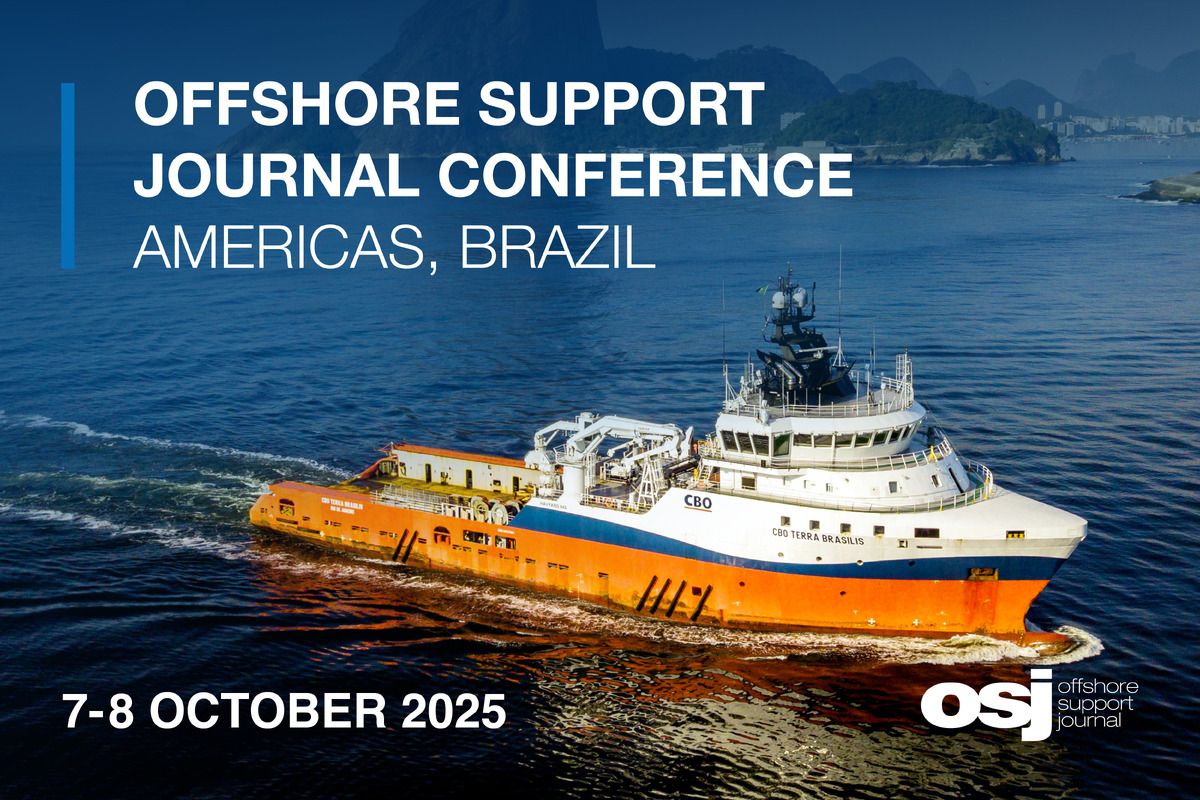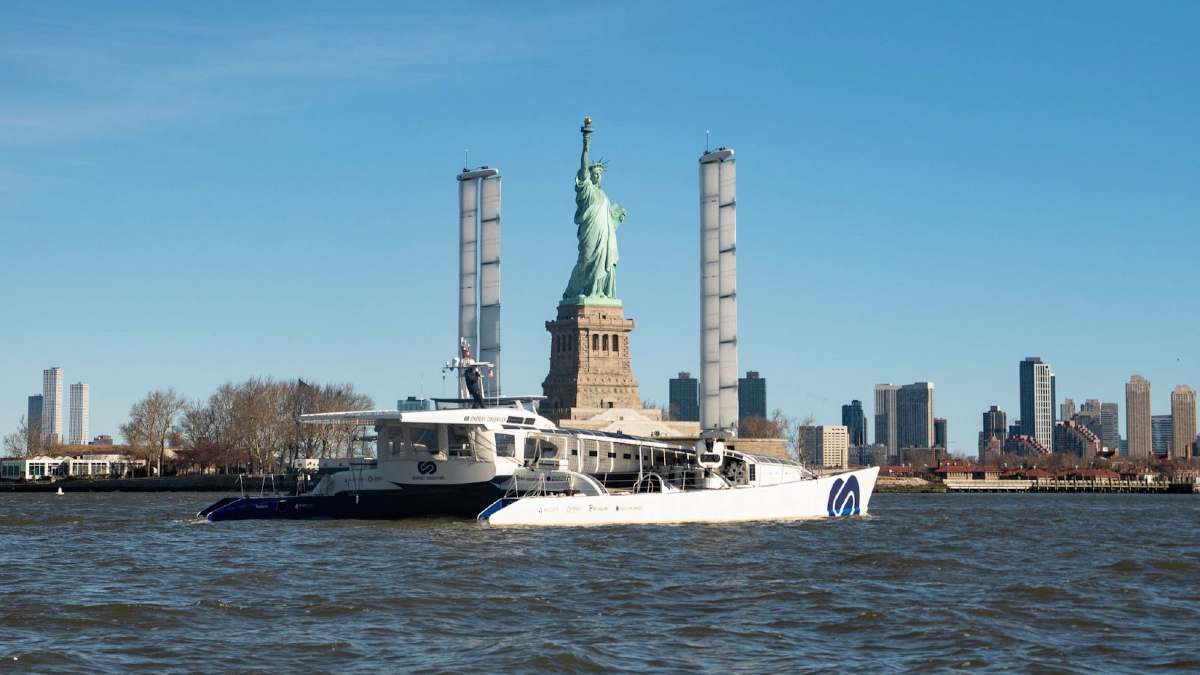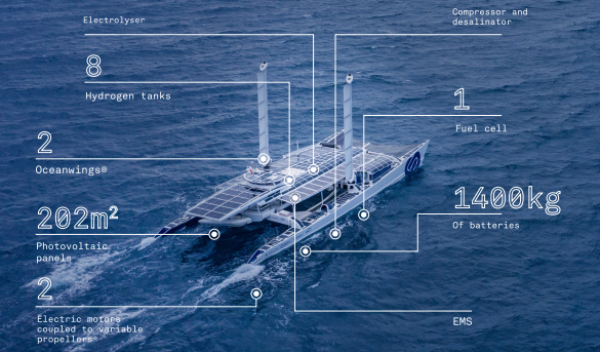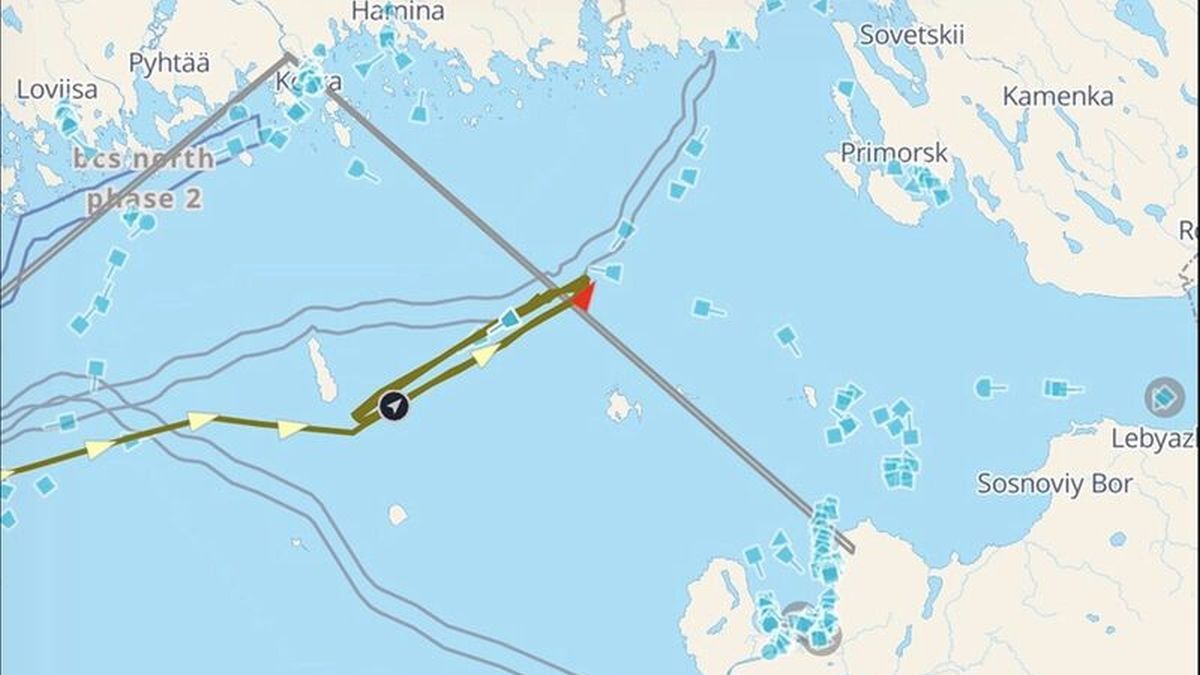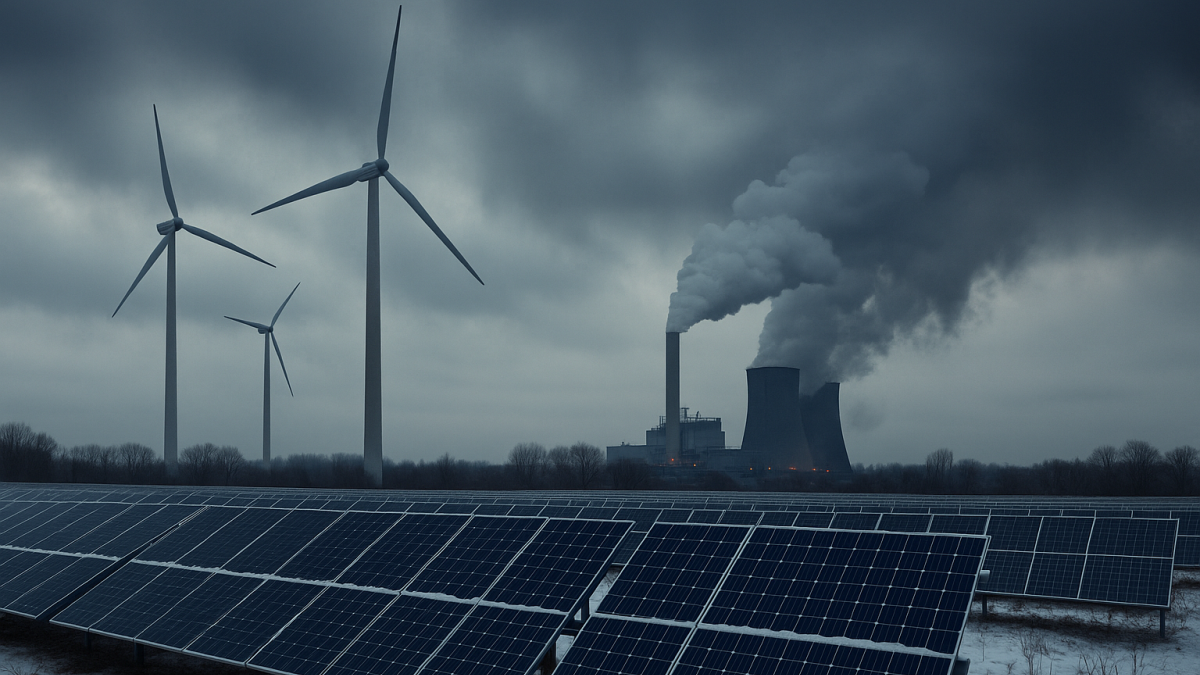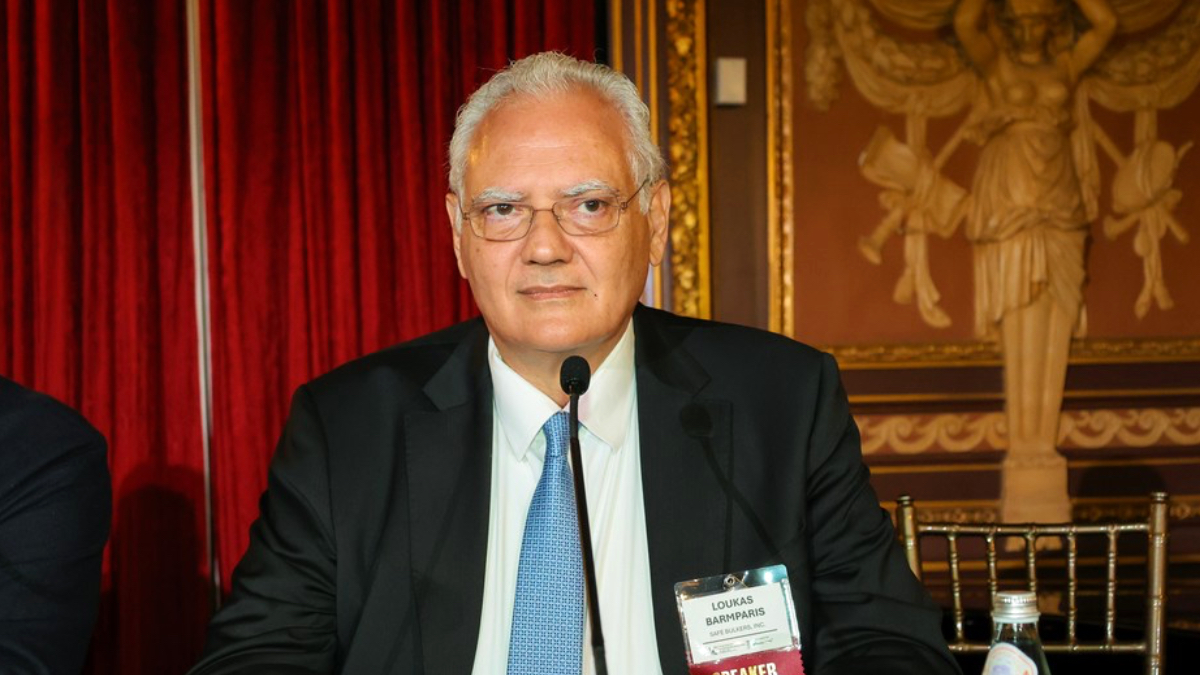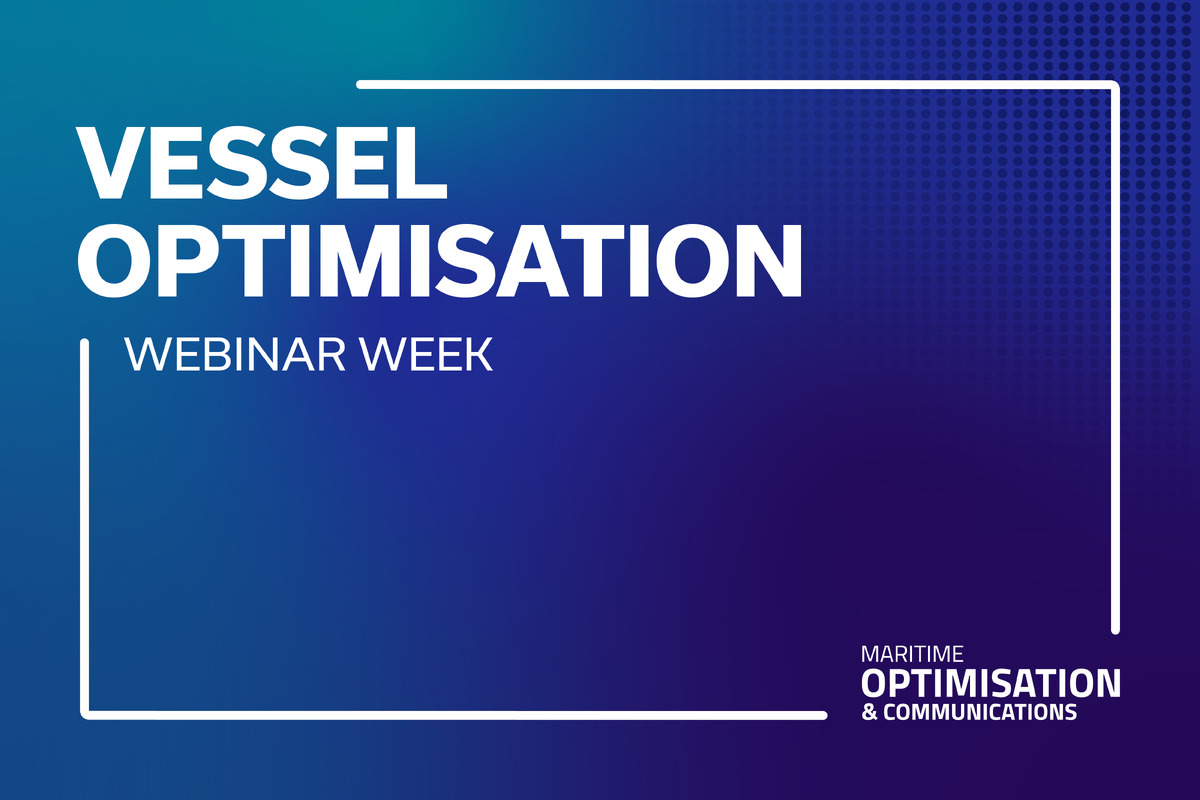Business Sectors
Events
Contents
Register to read more articles.
Zero-carbon pioneering vessel takes centre stage in New York for Earth Day
For the past seven years, Energy Observer has sailed thousands of kilometres around the globe in ‘unchartered waters’ in search of a greener future for shipping
The zero-emissions laboratory vessel has been testing, deploying and optimising cutting-edge technologies, producing its own carbon-free hydrogen fuel and capturing renewable energy from the sun and wind.
Research accumulated during its groundbreaking voyage will provide insight for the decarbonisation of shipping – much of which hinges on replacing fossil fuels with low- and zero-carbon energy and technologies such as hydrogen fuel cells, wind-assisted propulsion and batteries over the next 25 years.
Over its seven-year life, Energy Observer has managed four ocean crossings, visited more than 40 countries, made 86 stopovers, and sailed more than 62,000 nautical miles as of December 2023.
Now on one of the last international legs of its journey before it retires at the end of the year, Energy Observer has docked in New York City where it will remain for the next 12 days. During its visit, which culminates with Earth Day on 22 April, the pioneering catamaran-hulled vessel will be part of several educational events and invitation-only guided vessel tours that will allow the vessel’s crew and onboard scientists to share their experience while showcasing the innovative maritime technological solutions they have tested, deployed and optimised.
With New York City as a stage, Energy Observer founder, chairman and captain, Victorien Erussard said, “Earth Day serves as an extraordinary platform to not only engage with the American public, but also to connect with key decision-makers.”
Energy Observer will also participate in the 2024 Earth Day Festival in Union Square on 14 April, organised by the Earth Day Initiative.
On Earth Day, the UN will recognise Energy Observer in a ceremony in the presence of France’s Permanent Representative to the UN. During the ceremony, Energy Observer, a UN Sustainable Development Goals (SDG) ambassador since 2018, will hand over its UN flag, flown on the vessel, and 100 episodes of the web series Solutions recorded throughout the vessel’s voyage exploring UN SDG themes.
Innovative technologies on board
Sustainability lies at the heart of Energy Observer’s design. It was one of the first vessels to integrate a mix of renewable energies with onboard hydrogen generation and storage. Since 2019, Energy Observer has employed two first-of-its-kind automatic wind turbine OceanWings, measuring 32 m2, contributing to 30% of the vessel’s propulsion. The wings allow the boat to reach 12 knots without impacting its electricity consumption. The hybrid-powered vessel is fitted with two electric motors that drive variable propellers.
Hydrogen is produced on board by seawater electrolysis for the vessel’s hydrogen fuel cell. Based on a Proton Onsite system specially converted by Energy Observer’s engineers, the onboard electrolyser can produce up to 8 kg of green hydrogen per day and generated more than 300 kg in 2023. Because of its electric consumption, electrolysis is done dockside, though it is possible to electrolyse while underway once the OceanWings provide enough thrust to keep the vessel moving. Currently, 62 kg of hydrogen is stored on board, providing 1 MWh of electricity and 1 MWh of heat. Since it began sailing, Energy Observer has produced over 1.3 tonnes of hydrogen on board.
The vessel’s Energy Observer Developments (EODev) marine hydrogen system is designed around a Toyota hydrogen fuel cell, which powers the onboard electrical production system, operating at a power of 70 kW. Designed ad-hoc to operate on a boat, the cooling system features a temperature exchanger able to withstand moisture and salinity. Toyota and EODev are utilising Energy Observer as a floating lab to test and optimise the lifespan and reliability of this system and to predict maintenance for their other units in operation.
Energy Observer has two means of energy storage, with 106 kWh of li-ion batteries for short-term storage, and hydrogen produced from seawater and stored in gaseous form (350 bars) on board for long-term storage in eight hydrogen fuel tanks. If the vessel had to store its energy in batteries alone, it would weigh twice as much, according to the operator. The whole system emits no CO2 or fine particles.
To capture solar power, the vessel’s side wings are fitted with 202 m2 of bifacial photovoltaic panels, which generate a peak power of 34 kWh. The bifacial photovoltaic panels developed by the Institut National de l’Energie Solaire on the vessel’s side wings and aft section were installed in 2016-2017. Many of these panels, especially forward of the aft wings, have suffered material damage after being slammed into by powerful waves during the passage across the Pacific. As a result, a dip in overall efficiency was observed with these bifacial panels and some have had to be replaced. Some panels have also suffered water ingress in their encapsulation, again due to the waves washing over the decks during sea passages in some very rough weather and heavy seas.
The flexible solar panels all over the vessel form part of a very active partnership with Italian manufacturer Solbian. Innovations in terms of polymers, adhesives and contactors are all tested aboard the vessel, which means their performance is closely followed using monitoring software developed aboard the boat.
Energy Observer’s desalination system has gone through a substantial overhaul, but it is now capable of supplying the crew with fresh water and, above all, high-quality deionised water for the electrolyser.
Related to this Story
Events
Offshore Support Journal Conference, Americas 2025
LNG Shipping & Terminals Conference 2025
Vessel Optimisation Webinar Week
© 2024 Riviera Maritime Media Ltd.
